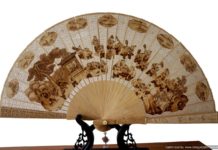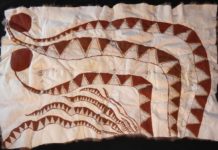Kesi is also known as k’o-ssu, and further back in history it is also called changkesi, kesizuo, kese, etc. In foreign countries, it is also referred to as “cut silk”, “Chinese silk tapestry” or “silk tapestry with cut designs.” As the woven work appears uneven at the joints of patterns and plain background, presenting a sign of crack as if it is engraved, kesi is literally known as “cut silk.” With the final product having the same patterns on two sides, kesi is amazingly similar to Suzhou bifacial embroidery.
Kesi weaving tools include a wooden loom, dozens of small bamboo-shaped shuttles containing colorful wefts and a bamboo plectrum. When weaving, artisans sit before the loom outlining patterns on the warp flush as pre-designed, weaving in the wefts by constantly switching the shuttles, and then pressing tight the wefts with the plectrum. To weave a piece of kesi, the switching of tens of thousands of shuttles is usually required.
There are two broad categories of kesi. One is daily necessities, including head cover, handbag, purse, book cover, spectacle pouch, table cloth, cushion cover and clothing belt. The other is artworks, including floor screen with golden background, hanging scrolls, central scrolls, hand scrolls, and album of painting or calligraphy. Kesi is generally adorned with floral patterns telling traditional stories or bearing auspicious implications, so it often serves as gifts or daily necessities.
Currently, kesi techniques are mainly preserved in Jiangsu area. Particularly, Wang Jinshan, a master of Chinese arts and crafts, has contributed a lot to the inheritance and restoration of kesi techniques.





